Lippia Nodiflora: [Characteristics, Cultivation, Care and Disadvantages]
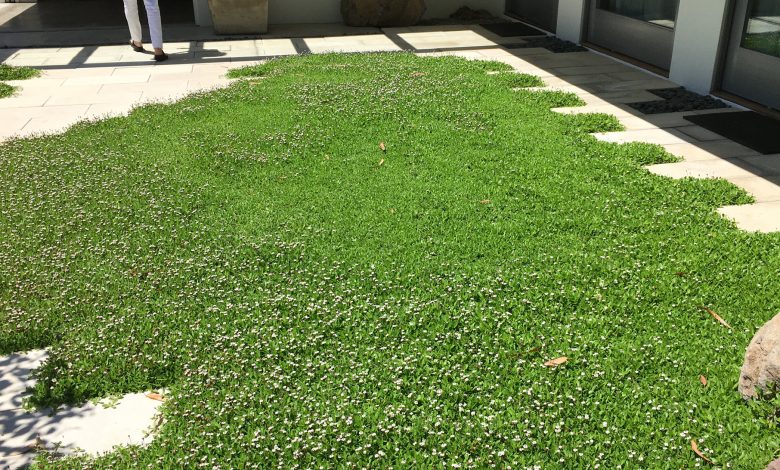
Important points when sowing Lippia nodiflora:
- When? The lippia nodiflora or beautiful carpet is a plant that can be planted during the fall or spring.
- Where? The Lippia nodiflora plant can be planted to fix slopes, rockeries, to cover dry areas of the garden and paths. It is a species that is highly resistant to pollution, so it can be easily grown in cities.
- How do we water? The best way to irrigate lippia nodiflora, and because it is a ground-covering species, is through sprinkler systems or, failing that, with drip irrigation, selecting wide-range emitters.
- How often do we water? The quantity and quality of watering for lippia nodiflora should be reduced to 1 or 2 times a week, during the hottest seasons of spring and summer.
- What care does it require? The lippia nodiflora is a plant that reproduces and develops easily, if it is given basic care for its cultivation. It reproduces in any type of soil and texture, but sandy loam substrates help it to grow its roots.
- What pests and diseases affect you? The lippia nodiflora is a variety of plant that is highly resistant to attack by pests and diseases. But, depending on the place of cultivation, gardens or greenhouses and the health of the environment, it can be attacked by aphids or be affected by fungi.
What characteristics of the lippia nodiflora plant?
The lippia nodiflora plant is a perennial species, creeping upholstery, native to Central America, of the Verbenaceae family. Its scientific names are Lippia nodiflora, Phyla nodiflora and Lippia canescens and it is known as Lipia and Bella carpet.
Lippia nodiflora does not exceed three to four inches in height, but its stems are long and take roots very easily, which helps the plant to grow in width.
The leaves of the plant are elliptical, petiolate, with jagged edges towards the middle of the upper end, small, green and covered with soft hairs. Its flowers are born in very tight apical glomeruli, they are white in some cases and pink in others, with a yellow center.
The inflorescences of the lippia nodiflora are small and globose, made up of tiny white flowers with yellow centers that take on a purple hue before fully ripening.
Lippia nodiflora is a fast-growing, dense, spectacular bloomer that dries up during the winter and regrows in the spring.
When to sow the lippia nodiflora?
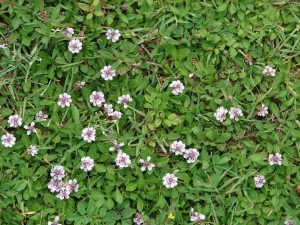 The lippia nodiflora or beautiful carpet is a plant that can be planted during the fall or spring.
The lippia nodiflora or beautiful carpet is a plant that can be planted during the fall or spring.
It does not require great care for its cultivation and with good irrigation and fertilization, very positive results can be achieved and a very high ground cover in the garden.
Experts recommend planting 5 to 15 seedlings per square meter, leaving little space between plants for greater density and a carpet effect.
Where to plant the lippia nodiflora?
The Lippia nodiflora plant can be planted to fix slopes, rockeries, to cover dry areas of the garden and paths. It is a species that is very resistant to contamination, so it can be easily cultivated in cities.
It is also an ideal variety for xerophytic gardens with low water availability, including coastal and saline environments.
How do we water the lippia nodiflora?
The best way to irrigate lippia nodiflora, and because it is a ground-covering species, is through sprinkler systems or, failing that, with drip irrigation, selecting wide-range emitters.
How often do we water the lippia nodiflora?
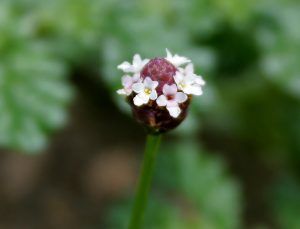 The quantity and quality of watering for lippia nodiflora should be reduced to 1 or 2 times a week, during the hottest seasons of spring and summer.
The quantity and quality of watering for lippia nodiflora should be reduced to 1 or 2 times a week, during the hottest seasons of spring and summer.
It will not be necessary to irrigate during the winter, when there is an average range of rainfall greater than 300 mm per year.
During periods of greatest drought, it is recommended to offer some support irrigation, once every twenty days. The lippia nodiflora is a species that consumes little amount of water and can survive during the summer without any type of irrigation.
How to plant a lippia nodiflora step by step?
- Acquire and/or buy the seeds or cuttings of the lippia nodiflora that are guaranteed to be healthy at the phytosanitary level.
- Select a location in the garden, in a rockery or in a space where the lippia nodiflora can expand.
- Place a substrate based on sandy loam soil with organic matter.
- Sow or plant 5 to 10 seeds for each m2 of surface.
- Water abundantly without flooding. Then once or twice a week, if it’s very hot.
- Pay the plant with fertilizers at the beginning of its cultivation to achieve a rapid development of the lippia nodiflora.
- Locate in open spaces, in partial shade and/or in full sun.
What care does the lippia nodiflora need?
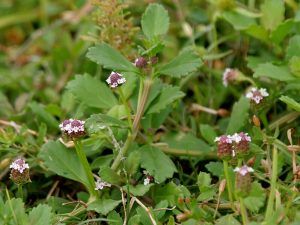 The lippia nodiflora is a plant that reproduces and develops easily, if it is given basic care for its cultivation.
The lippia nodiflora is a plant that reproduces and develops easily, if it is given basic care for its cultivation.
It reproduces in any type of soil and texture, but sandy loam substrates help it to grow its roots.
The location of the lippia nodiflora should be outdoors on bare ground, in semi shade or full sun. The ideal temperature for its growth and development is above 15º C, it even supports temperatures below 0º C, but it loses its leaves.
For large plantations, it is recommended to provide a mixture of 2 to 3 kilos of organic matter for a better development and growth of the lippia nodiflora. Lippia nodiflora requires the supply of nutrients at the beginning of sowing, and then liquid fertilizers must be applied, together with the irrigation water, at the beginning of spring.
The use of granulated fertilizers that are easily spread over the entire surface of the plantation is also recommended. It is a drought-resistant plant, making it ideal for xerophytic environments.
It does not require pruning, but if uneven or excessive growth is observed, a development pruning can be carried out before flowering to favor the appearance of new shoots.
What pests and diseases affect lippia nodiflora?
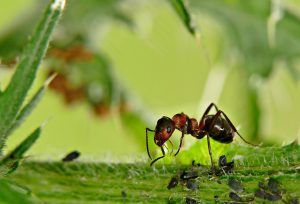 The lippia nodiflora is a variety of plant that is highly resistant to attack by pests and diseases.
The lippia nodiflora is a variety of plant that is highly resistant to attack by pests and diseases.
But, depending on the place of cultivation, gardens or greenhouses and the health of the environment, it can be attacked by aphids or be affected by fungi.
Aphids are small insects that suck sap from stems. They are very dangerous due to their great ability to reproduce and can even kill the lippia nodiflora. To eliminate aphids, the application of a mixture of water with biodegradable soap is recommended.
Excess water in the substrate and high environmental humidity can cause fungal diseases to lippia nodiflora. Prevention and maintenance of lippia nodiflora can help against fungal attack.
It is recommended to follow up and be very attentive to the weakening of the neck, the root and the wilting of the plant, because they are symptoms of the disease.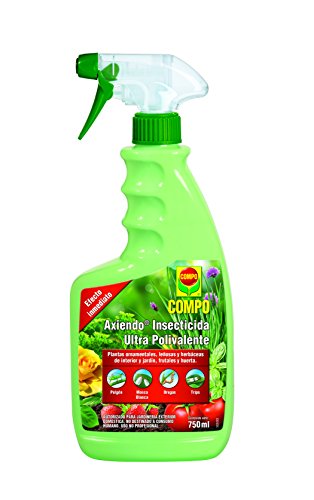
Bibliographic references
- Contribution to the knowledge of the genera Phyla Lour., Lippia L. and Aloysia Palau (Verbenaceae) in Spain, JMS DE LORENZO-CÁCERES – … dedicated to the study of the flora …, 2016 – researchgate.net
- Species of the genus Lippia used in Latin American popular medicine, GB Bassols, AA Gurni – Dominguezia, 1996 – ojs.dominguezia.org
- Characterization of the phenolic and flavonoid profile of eucalyptus, oleaeuropae and lippia nodiflora with antioxidant potential, E Vargas Tapia – 2019 – repository.upeu.edu.pe
- Characterization of the essential oil present in the leaves of Phyla Nodiflora (L.) Greene (OROZUL), OLB Calvache, JM Villota, DM Tovar – University and Health, 2010 – revista.udenar.edu.co

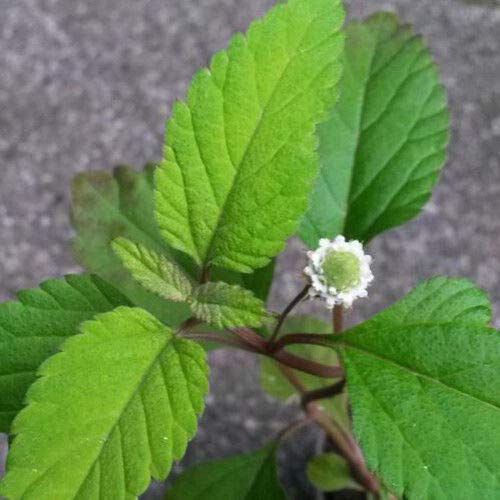
![Photo of Blanket Irrigation: [Concept, Advantages, Disadvantages and Crops]](https://www.complete-gardening.com/wp-content/uploads/2022/08/blanket-irrigation-concept-advantages-disadvantages-and-crops-390x220.png)
![Photo of Dahlias Care: [Earth, Strengthening, Humidity and Pruning]](https://www.complete-gardening.com/wp-content/uploads/2022/08/dahlias-care-earth-strengthening-humidity-and-pruning-390x220.jpg)
![Photo of Sow Alfalfa: [Substrate, Irrigation, Images + Step by Step]](https://www.complete-gardening.com/wp-content/uploads/2022/08/sow-alfalfa-substrate-irrigation-images-step-by-step-390x220.jpg)
![Photo of Plant Rhododendron in your Garden: [Complete Guide + Important Points]](https://www.complete-gardening.com/wp-content/uploads/2022/08/plant-rhododendron-in-your-garden-complete-guide-important-points-390x220.jpg)